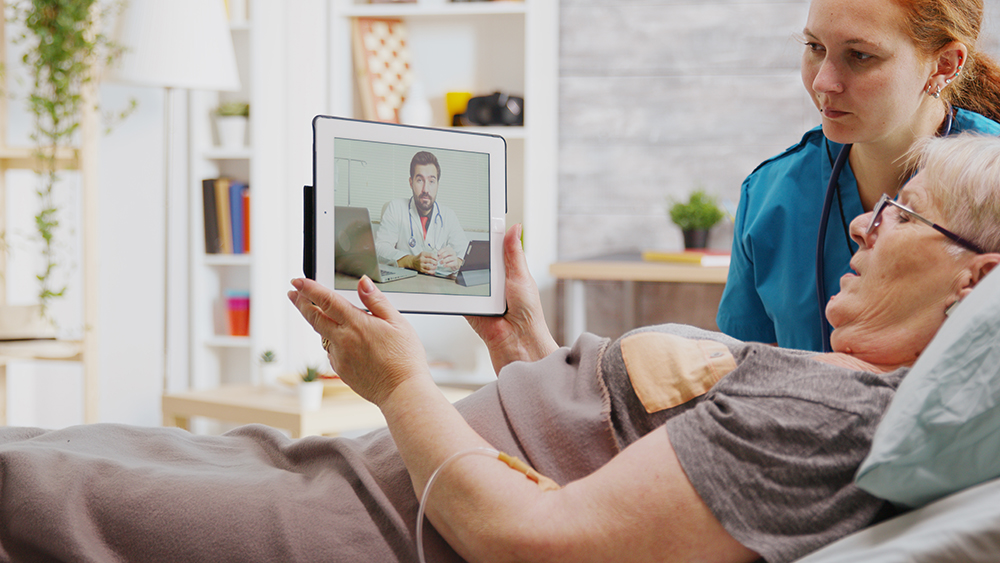Revolutionizing Primary Care: The Rise of Telemedicine in Healthcare
In an era where technology has touched nearly every facet of our lives, it comes as no surprise that healthcare is also experiencing a digital transformation. Telemedicine, the practice of providing remote healthcare services, is revolutionizing primary care. This innovative approach allows patients to access medical care from the comfort of their own homes, and its adoption has been on the rise in recent years. From rural communities to bustling urban centers like Houston, Texas, telehealth is becoming an integral part of the healthcare landscape. In this article, we will explore the evolution of telemedicine in primary care, its benefits, and how it is adapting to meet the evolving needs of patients.
The Evolution of Telemedicine in Primary Care
The concept of telemedicine isn’t new, but its widespread integration into primary care services is relatively recent. Traditionally, a visit to the doctor’s office involved a physical examination and face-to-face interaction. However, with the advent of technology and the internet, the healthcare landscape has been transformed. Telemedicine leverages telecommunications technology to bridge the gap between patients and healthcare providers, allowing for remote healthcare consultations.
One of the significant drivers of telemedicine’s growth in primary care is the increased access it provides to medical services. In many parts of the United States, particularly rural areas, there has long been a shortage of primary care physicians. Telehealth helps address this shortage by enabling patients in underserved regions to connect with doctors online. This means that individuals who previously had limited access to healthcare services can now receive quality medical care through telemedicine.
Additionally, the convenience of telemedicine cannot be overstated. Online doctor visits eliminate the need for patients to travel to a physical clinic, saving time and reducing the burden of commuting. Patients can schedule appointments at their convenience, making it easier to fit healthcare into their busy lives. This convenience factor has made telemedicine an attractive option for individuals seeking primary care services.
Benefits of Telemedicine in Primary Care
The adoption of telemedicine in primary care is not without reason. Several key benefits make it an appealing option for both patients and healthcare providers.
First and foremost is the convenience it offers. Patients no longer have to wait in crowded waiting rooms or spend hours commuting to and from the doctor’s office. Instead, they can access primary care services from the comfort of their own homes. This is particularly beneficial for individuals with mobility issues, chronic illnesses, or busy schedules.
Telemedicine also enhances access to healthcare services. As mentioned earlier, it helps address the shortage of primary care physicians in certain areas. Patients who would otherwise have limited or no access to a doctor can now connect with healthcare professionals online. This expanded access can be a lifesaver for individuals in remote or underserved communities.
Moreover, telemedicine promotes early intervention and preventive care. Patients are more likely to seek medical advice and follow up on their health concerns when it’s convenient and accessible. This can lead to the early detection of health issues, ultimately resulting in better health outcomes.
The cost-effectiveness of telemedicine is another compelling factor. Online doctor visits often come at a lower cost than traditional in-person appointments. Patients can save on transportation expenses and reduce the need for time off work. For healthcare providers, telemedicine can streamline operations and reduce overhead costs associated with maintaining a physical office.
Telemedicine Adapting to the Changing Healthcare Landscape
Telehealth is not a static concept but one that continues to evolve to meet the changing needs of patients and healthcare providers. It has demonstrated its adaptability in several ways.
One notable adaptation is the integration of telemedicine into existing healthcare systems. Many primary care practices now offer a blend of in-person and virtual services. Patients have the flexibility to choose between physical visits and online doctor consultations based on their preferences and needs. This integration ensures that telemedicine complements traditional primary care rather than replacing it.
Another noteworthy development is the expansion of telehealth services beyond simple consultations. Many telemedicine platforms now offer a range of services, including remote monitoring of chronic conditions, prescription refills, and mental health counseling. This expanded scope of services demonstrates the versatility of telemedicine in addressing a wide array of healthcare needs.
Telemedicine has also found applications in specialized fields within primary care. For instance, dermatologists can diagnose skin conditions through virtual visits, while nutritionists can provide dietary guidance online. This specialization allows patients to receive tailored care from experts in various domains without the need for in-person appointments.
The ongoing advancements in technology further enhance the capabilities of telemedicine. High-definition video calls, secure messaging platforms, and electronic health records contribute to a seamless and secure online healthcare experience. As technology continues to evolve, so too will the capabilities of telehealth in providing comprehensive primary care services.
Telemedicine in Houston, Texas
Houston, Texas, is a bustling metropolis known for its diverse population and thriving healthcare sector. In this dynamic city, telemedicine has taken root as a valuable tool for improving access to primary care. Houstonians are no strangers to the challenges of navigating the city’s traffic and sprawling geography, making telehealth an attractive alternative.
The benefits of telemedicine are especially evident in a city as large and populous as Houston. Patients in need of primary care services can now connect with doctors without enduring long commutes or waiting for appointments. For individuals living in Houston’s outlying areas or those with busy work schedules, telemedicine offers a convenient solution to healthcare access.
Furthermore, telehealth has been crucial during public health crises, such as the COVID-19 pandemic. The ability to access primary care remotely helped reduce the spread of the virus by minimizing in-person interactions. Houston’s healthcare providers embraced telemedicine to ensure patients continued to receive necessary medical care while adhering to safety measures.
As telemedicine continues to grow in Houston and throughout Texas, it becomes an essential component of the state’s healthcare infrastructure. It complements the existing network of hospitals, clinics, and primary care practices, ensuring that patients have options that suit their preferences and needs.
VitaVia Telemedicine: Bridging the Gap
One of the leading players in the telemedicine landscape is VitaVia Telemedicine, a platform dedicated to providing remote healthcare solutions for patients. VitaVia Telemedicine understands the importance of access to primary care and has harnessed the power of technology to make it a reality for individuals in Houston, Texas, and beyond.
VitaVia Telemedicine offers online doctor visits that are easy to schedule and convenient to attend. Patients can connect with healthcare professionals from their homes, eliminating the need for long commutes and waiting rooms. Whether it’s a routine check-up, prescription refill, or consultation about a health concern, VitaVia Telemedicine brings the doctor to you.
For businesses in Houston looking to provide healthcare solutions for their employees, VitaVia Telemedicine offers remote business healthcare options. This enables organizations to prioritize the health and well-being of their workforce without the need for employees to take time off for doctor’s appointments. It’s a win-win situation, promoting employee health while maintaining productivity.
In conclusion, telemedicine is changing the landscape of primary care in healthcare. It offers numerous benefits, including increased access, convenience, cost-effectiveness, and early intervention. Telemedicine is adapting to the evolving healthcare landscape, integrating with traditional healthcare systems, expanding its scope of services, and leveraging advanced technology.
In Houston, Texas, and beyond, telemedicine is a valuable resource for patients seeking primary care services. Platforms like VitaVia Telemedicine are leading the way in making healthcare accessible and convenient through online doctor visits. As technology continues to advance and healthcare needs evolve, telemedicine will remain a vital component of the healthcare system, ensuring that patients receive the medical services they need in the comfort of their own homes or through remote business healthcare solutions for employees.










